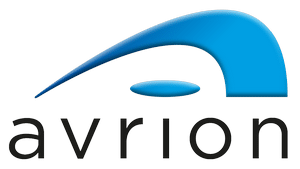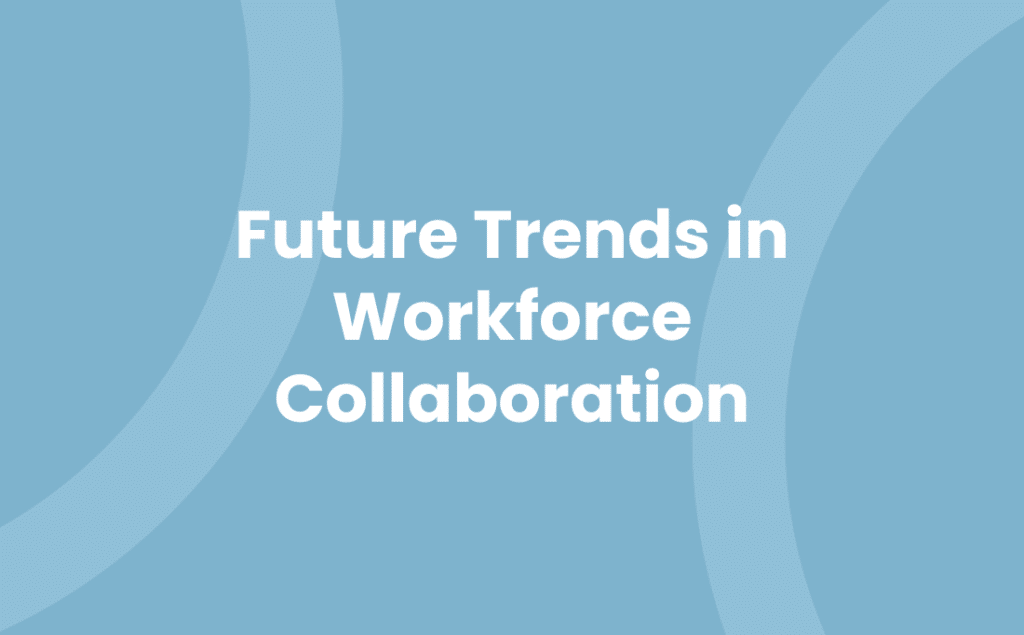You’re navigating the digital age, and it’s clear that the future of work is intertwined with digital transformation. But what does this mean for workforce collaboration? How are these technological shifts shaping the way teams communicate, strategise, and deliver results?
In this enlightening journey, we’ll explore the crucial role of digital transformation in enhancing workforce collaboration. We’ll unravel the ways in which technology is revolutionising how we work together, and why it’s more important than ever to embrace this change.
So, strap in and get ready to delve into the fascinating world of digital transformation and its impact on workforce collaboration. This is where the future of work is heading, and you don’t want to be left behind.
Understanding Digital Transformation
In the realm of workforce collaboration, the role of digital transformation stands prominent. It empowers ways in which personnel engage, strategise, and attain outcomes. As business operations increasingly move to the cyberspaces, mastering digital transformation became more crucial than ever. It caters to that precise need, fostering tech-savvy practices to enhance collaboration in flexible work environments.
Deciphering digital transformation, at its core, is recognising the integration of technology into all areas of business. It marks a cultural shift where constant evolution and adaptation remain key for seamless operations. Little can prepare you for this adventure within the business world – a compelling journey that carefully navigates the intricacies of technological change.
Digital transformation profoundly influences how employees collaborate. Teams are no longer confined within physical office spaces, and geographical boundaries become insignificant. With digital tools and platforms at their disposal, they can exchange ideas, strategise, and implement tasks virtually. Thus, enhancing digital workforce collaboration and encouraging collective growth.
However, it’s not merely about embracing new technologies. It’s more about reframing old-school organisational cultures and outdated mindsets. A digital transformation requires a shift from traditional hierarchical structures towards a more collaborative and transparent model. This change alone often poses a formidable challenge for many establishments.
Digital transformation collaboration, in essence, is unlocking the potential of digital tools, mobile and cloud technology, and advanced analytics to boost teamwork. These tools facilitate communication, real-time sharing of information, and task management, leading to remarkable productivity gains.
So, amongst the world of collaborative work environments and digital transformations, the two intimately interlink. They create an environment designed to enhance productivity, encourage innovation, and unlock new opportunities. The ever-evolving business landscape demands this shift. By understanding digital transformation, you’re not only adapting to the change but also framing the future of work. So, embrace the journey and discover the secrets of robust digital workforce collaboration.
The Importance of Workforce Collaboration in the Digital Era
In the era of digital transformation, workforce collaboration garners significant attention. This attention vastly exceeds mere qualitative admiration or quantitative measurement. It earns vital status, driving businesses, particularly those thriving in flexible environments. The integration of cutting-edge technologies into any organisation’s operational fabric enhances the synergy of teamwork, opening a world of possibilities in terms of virtual collaboration.
Workforce collaboration in this digital age carves out a new paradigm, away from traditional chain-of-command processes. Technology offers an avenue for interaction beyond physical borders, transcending conventional boundaries. With an array of digital tools at our disposal, virtual collaboration redefines the way teams operate. By fostering cohesion, communication, and efficiency, organisations can accelerate the delivery of outcomes. It becomes clear that investing in workforce collaboration during the process of digital transformation isn’t an option‚ it’s a strategic necessity.
Remember this: digital workforce collaboration boosts efficiency and innovation. Digital tools streamline tasks, making it easier to organise, schedule, and track work. For a business owner traversing the digital transformation journey, integrating technology allows for a smoother operation. In the realm of task management, technology aids in establishing clear goals, deadlines, and progress tracking. For team communication, instant messaging, video conferencing, and shared digital workspaces prevail. These tools serve as a bridge for enhanced connectivity, where ideas can evolve, and strategies can take shape.
Let’s face it; remote working is real and here to stay. Encouraging digital collaboration keeps teams connected across distance, driving productivity and maintaining team morale. Digital transformation collaboration isn’t just about technology, it’s about people- fostering a culture that values collaboration and shares a collective vision. By leveraging digital platforms, you’re realising the true potential of your team, encouraging strategic creativity and ultimately shaping the future of work.
Workforce collaboration is the driving force behind successful digital transformation. It forges a pathway that intertwines state-of-the-art technology and teamwork. In the era of digital transformation, it’s clear that empowering your team with the right tools not only boosts productivity but also enables your business to adapt to the changing landscape of work. Harness this potential, and see your organisation thrive.
How Digital Transformation Impacts Workforce Collaboration
Digital transformation impacts workforce collaboration in multiple fundamental ways. Firstly, it brings about a vital increase in flexibility. Teams can now collaborate virtually across multiple platforms, transcending geographical barriers. This type of digital workforce collaboration allows for real-time problem-solving, ideas exchange and task tracking without physical proximity.
Secondly, digital transformation promotes accessibility. With digital shift, a plethora of data and tools become available at everyone’s fingertips. As a result, informed decisions can be made promptly, driving efficiency and innovation.
Thirdly, with digital tools, communication improves significantly. Traditional forms of communication like email chains take a backseat, giving way to instant messaging platforms, shared digital whiteboards, and video conferencing. This real-time communication ensures clarity, minimises the chances of misconceptions and keeps everybody on the same page.
Lastly, digital transformation fosters a culture of learning and adaptability. With the tech-savvy landscape, continuous learning becomes a norm rather than an exception. Platforms that provide training and development materials and a culture that promote knowledge sharing ensure that everyone stays updated with the latest skills.
Thus, the impact of digital transformation on workforce collaboration is significant, and it brings about growth and competitive advantage. By adopting these practices and making them part of their day-to-day operations, organisations can propel themselves in this swift and evolving business arena.
Remember, handling this transformation can be challenging. Specialised consultation might be required to ensure seamless implementation and adaptation. An understanding of the organisation’s specific needs and requirements is crucial for the successful incorporation of digital transformation into workforce collaboration.
Ultimately, the intertwining effect of digital transformation and workforce collaboration offers a strategic advantage that can be leveraged to improve productivity, foster innovation, promote adaptability, and gain competitive standing in today’s business market. Stay ahead by embracing the power of digital workforce collaboration.
Case Studies of Successful Digital Transformation Workforce Collaboration
The implementation of digital practices in workforce collaboration enhances flexibility and promotes better accessibility, communication, and learning culture, as previously discussed. To strengthen your understanding, let’s scrutinise a couple of exceptional case studies.
Firstly, the banking giant JP Morgan Chase sets the bar high in this digital realm. They developed proprietary software codenamed “Gaia” that leveraged collaboration among their tech teams. Gaia sped up the software development process and reduced the man-hours required. Once an arena of stiff silos, the Gaia programme demonstrates a shift towards a cooperative model, bringing about incredible efficiency and saving time in delivering tech solutions.
Delving into the retail industry, Walmart stands out with its commendable transformation approach. They coupled their workforce collaboration with bold digital strategies, an eCommerce platform identified as “Pangea,” redefining the dynamics of their business. Accelerated by the lockdown situations, Walmart’s virtual operational adaptability had them well prepared for the surge in online shopping. The employees were given suitable tools and accurate data to aid decision-making, proving workforce collaboration as an arsenal in their digital transformation journey.
Reflecting on education, the University of Alberta epitomises successful transformation. Shifted entirely online amidst the COVID-19 crisis, they ushered in a complete digital transformation in their pedagogical and administrative operations. Through the Campus Solution platform, they achieved seamless collaboration between staff and students, illustrating the universal potentials of digital transformation in fostering a shared culture of learning and adaptability.
Keep in mind, integrating technology with collaboration not only conditions it to the contemporary business environment but also future-proofs the organisation. In all instances mentioned, it’s apparent that recognising your organisations’ specific needs paves the way in making the digital leap.
Overcoming Challenges in Digital Transformation and Workforce Collaboration
Implementing digital transformation and enhancing workforce collaboration pose unique challenges. Address these challenges by comprehending their depth, gearing your strategies specifically, and taking proactive measures to mitigate them.
- Embrace Change: Digital transformation collaboration creates an entirely different way of working. Resistance to change prevails in organisations, becoming a major roadblock. Encourage change by simplifying the transformation process. Break it down into manageable parts, helping employees understand and embrace new ways of operating.
- Prioritise Training: A digital workforce collaboration requires a specific skillset. Invest time in training employees to use new technology efficiently, thereby alleviating anxiety around adopting digital practices. Cognizant’s approach to active training, for instance, dramatically scaled up their digital aptitude.
- Streamline Communication: Communication greatly influences the success of digital transformation and workforce collaboration. Establish communication channels that promote transparency and limit misunderstanding.
- Align Goals: The goal of digitalisation varies across organisations, but the common goal remains efficiency and improvement. See to it that everyone understands how they contribute to these overarching objectives.
- Tailor Solutions: One size does not fit all. Tailor your digital solution keeping in mind the unique requirements of your organisation. JP Morgan Chase’s “Gaia” software didn’t come off the shelf but was a product of careful tailoring to meet specific needs.
- Opt for Flexible Technologies: Rigid technology infrastructure that caters to only present needs might limit future scalability and adaptability. Flexibility is a shining element in Walmart’s “Pangea” eCommerce platform, underlining the importance of future-ready tech solutions.
Digital transformation collaboration and digital workforce are not without difficulties. However, inclusion, continuous learning, communication, shared goals, and a flexible solution can pave the way for seamless digital integration and improved workforce collaboration.
Future Trends in Digital Transformation and Workforce Collaboration
Progress in digital transformation collaboration dictates the evolution of workforce collaboration. Advanced technology and new methodologies continue to reshape how organisations facilitate work processes.
Innovations in Artificial Intelligence (AI) and Machine Learning (ML) contribute to the growth of digital workforce collaboration. For example, AI-powered bots can automate routine tasks, freeing up valuable time for team members to focus on more complex tasks.
Virtual Reality (VR) and Augmented Reality (AR) also begin to leave their mark. Implemented correctly, these tools provide immersive and interactive platforms for both local and remote teams to collaborate. Case point, Microsoft’s HoloLens offers AR tools intended to change how teams work, irrespective of their geographical locations.
Another compelling trend is the rise of gig economy platforms. Platforms such as Upwork and Fiverr have set the stage for a digitally-enabled freelance workforce. Companies tapping into this resource enjoy the benefits of the diversified skill sets, improved workflow efficiency, and reduction of long-term hiring costs.
Your organisation must also keep an eye on the importance of big data in workforce collaboration. Leveraging of data analytics provides critical insights into team performance, improved decision making, and strategic planning. It invariably drives increased productivity and informed decision-making.
In the realm of cloud technologies, improvements are rapid and transformative. When implemented, distributed cloud systems reduce latency issues, enhance data security, and provide easier access to collaborative tools.
The growing emphasis on employee experience is another aspect not to overlook. Digital transformation tools no longer focus solely on improving productivity; they are now designed to align with the needs of employees, creating a more gratifying and productive work atmosphere.
Evidently, the interconnection of these trends will shape the future of digital transformation and workforce collaboration. As you steer your organisation through these progressive waves, it is crucial to grasp these emerging trends, adapting them in ways that best serve your team and overarching business objectives.
Conclusion
You’ve seen how digital transformation is key to boosting workforce collaboration. Successful examples like JP Morgan Chase’s ‘Gaia’ and Walmart’s ‘Pangea’ have proven this. Yet, it’s not a walk in the park. You’ll face challenges that require embracing change, effective training, streamlined communication, and goal alignment. Tailored solutions and flexible technologies are your allies in this journey.
Looking ahead, AI, ML, VR, AR, gig economy platforms, big data, cloud technologies, and employee experience are set to redefine work processes. It’s essential you adapt to these trends to optimise team performance and meet business objectives. The future of work is digital, and it’s time you got on board. The success of your workforce collaboration and ultimately your business, depends on it.


